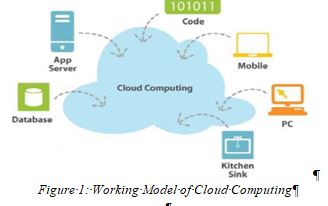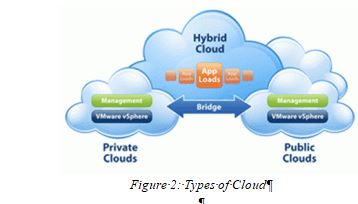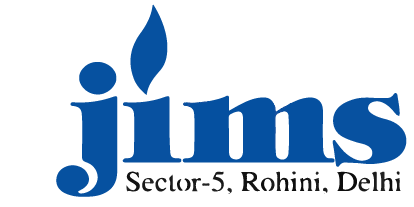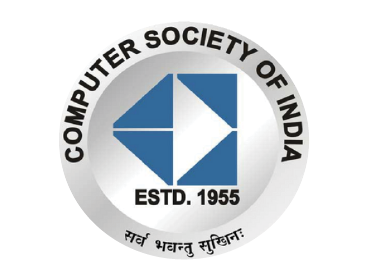Solutions to the Security Issues In Cloud Computing
Faculty Mentor:
Dr.Deepak Chahal
Student Name:
Lakshit Marjara (MCA – I)
Anurag Singh (MCA – I)
1.INTRODUCTION
Cloud computing can be defined as a service that is based on internet and on the on-demand availability of computer system resources that gives the platform for sharing computer resources. It includes servers, storage, analytics ,databases, networking, software, and intelligence— in the world of Internet.
“Cloud Computing is a model for enabling ubiquitous, convenient, on demand network access to a shared pool of computing resources”.
Cloud computing is a more efficient way of delivering computing resources.It provides the platform to the organizations and users to protect their data on third-party storage location.These data centers may reside on a global network. Cloud Computing helps in providing new applications, Store, Backup, Host Websites and blogs.
Cloud Computing provides several types of services like IaaS (Infrastructure as a Service), PaaS (Platform as a Service), SaaS (Software as a Service).Private Cloud and virtualization technology which is the underlying infrastructure of most cloud computing systems . Each of these models has unique security issues.
2.BASIC FEATURES OF CLOUD COMPUTING
- On Request Self-Demand Service: A customer can access the cloud services at any time without any geographical restriction. Now a days every company provide on demand services to their users without any global restriction.
- Wide Network Access: Network resources are available over the network and can be accessed through different network tools which uses heterogeneous platforms.
- Resource Sharing: With the help of multi-tenant model, various cloud service providers are providing parallel services to their users and because of that the resources can be used efficiently.

3.TYPES OF CLOUD
- Private Cloud: -The cloud infrastructure is purely dedicated to an organization. Example, Window Server ‘Hyper-V’.
- Community Cloud: -Sharing of cloud infrastructure by the general public e.g., Google Doc, Spread sheet, etc.
- Hybrid Cloud: -It is a composition of two or more clouds (private, community, or public). Example, cloud Bursting for load balancing clouds.

4.CLOUD SERVICES MODELS
- Software as a Service (SaaS):- SaaS is a software distribution model where software is totally managed and controlled by the third party provider and makes them available to the user with the help of internet.
- Cloud Infrastructure as a Service (IaaS): - Infrastructure-as-a-Service (IaaS) is a cloud-computing in which a vendor provides users access to various computing resources. IaaS is the root for cloud IT and it also supports feature to networking computer, virtual or on dedicated hardware. IaaS provides high level of control and support for the available resources.Example, Amazon Web Services and Flexi scale.
- Platform as a Service (PaaS): - Platform as a service remove the need for a company to manage its infrastructure like hardwareand software. PaaS can be defined as a platform that allows the customers to develop, run and manage the applications without carrying the responsibility of building and maintaining the infrastructure.Platform as a service can be further classified as a rented accommodation where the tenant has to pay only for the services that he or she uses, the platform and the related infrastructure will be provided by the owner of that property and further the maintenance responsibility also lies with owner of that property only.
5.BENEFITS OF CLOUD COMPUTING
- Cost: At Low cost we get the better services . In other words we can say, it is really cheap and further cloud computing eliminates the cost of resources and their maintenance.
- Speed: It provides much faster speed as compare to other storage devices.
- Productivity: In cloud Computing, setup and installation of hardware and software is no longer needed, thus it saves time and money. Today every small company tries to improve their productivity so that small companies can compete with large MNCs. But that doesn’t mean big MNCs never tries. As MNCs also tries to compete with other big organizations. Thus, with the help of cloud computing productivity increases for small to large organizations.
6.CLOUD SECURITY TECHNOLOGY AND TOOLS
The following are list of technologies specially developed to secure the cloud:
- Cloud Firewall: A cloud firewall supports distributed environments,where users and applications operate from various locations and sources. Cloud firewall are designed for modern business needs, and resides within online application environments. With the implementation of cloud firewall, organizations need not require to install the individual firewalls in their systems.
- CASB: Cloud Access Security Broker (CASB), a software tool that acts as an enforcement point for security policies. A CASB is placed between cloud service consumers and providers and allows organizations to extend their security policies beyond the organization boundaries.
- Cloud Data Encryption: It helps to protect sensitive data stored on cloud servers and securing the data travelling on network. Cloud data encryption also aims to prevent unauthorized access to private data.
- Cloud Backup and Recovery: This tool records the data and further make a copy to a cloud server, where they are maintained and can be recovered if necessary.
7.POSSIBLE THREATS REGARDINGCLOUD COMPUTING
- DDOS-Distributed-Denial-of-Service Attacks: DDOS attack is a malicious attempt to disrupt normal traffic of a targeted server or machine. This attack do the bombarding of traffic to the targeted server or machine in such a way that the users are unable to access their machine. This is most powerful attack from the hacker’s side as it consumes the bandwidth of targeted machine and makes it temporarily unavailable.
- SCCS-Shared Cloud Computing Services:
As we know in cloud computing, resources are shared and due to this threats can be originate from various users within the cloud computing service. Any user can host a malware in the cloud computing environment which can further affect all the users sharing that resource. It is one of danger threat because it results in data loss and can also block the other users access to the cloud service..
8.SOLUTIONS TO SECURITY CHALLENGES IN CLOUD COMPUTING
- Data Encoding: Data encoding is claimed to be an improved approach concerning information security. Information can be encrypted with various encryption tools so that it cannot be leaked if someone tries to hack or misuse it. Data encoding can further be classified as a process of converting the data or a given sequence of characters, symbols, alphabets etc., into a specified format, for the secured transmission of data and later with the help decoding the process will be reversed and information can be extracted from the converted format.
- Legal Jurisdiction: Inspite of the various security threats, law is there to protect the users integrity. We have a provision of IT act in Indian penal code for breach in cloud and its privacy.
9.CONCLUSION
This article discussed about the services and issues of cloud computing. Lot of research are still required in this area. As some issues like privacy and security are not yet been answered by the research of experts
To conclude we can say the cloud computing is now basic way for all organization to have all their documents and resources whenever the need at their place .It is a also good way to share your resources across geographical conditions.Security is still a major concern for the Cloud environment, efforts are being made to reduce the security threats and possibly in future security risk will be minimized.
10.REFERENCES
[1]https://www.w3schools.in/cloud-computing/cloud-computing-applications
[2]https://www.scribd.com/doc/29896059/PPT-on-Cloud-Computing
[3]https://azure.microsoft.com/en-in/overview/what-is-cloud-computing/
[4]http://en.wikipedia.org/wiki/Cloud_computing
[5]http://www.engpaper.com/free-research-papers-computer-science-cloud-computing.htm
[6]http://www.ijcsits.org/papers/Vol1no22011/
13vol1no2.pdf





